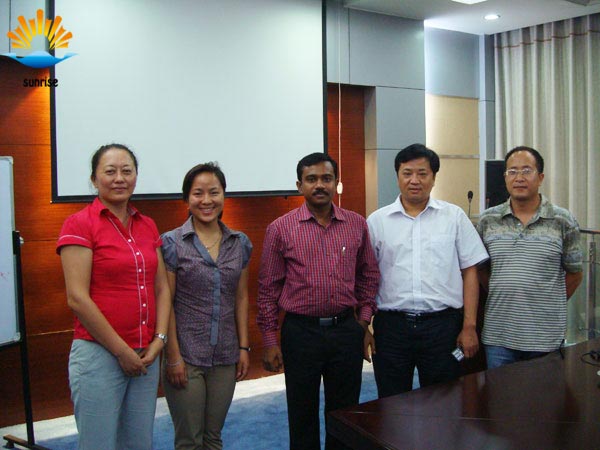
Product List
Success Case
Contact Us
- 0086 371 63838939
- 0086 371 63835539
- sales@sunriserefr.com
- tkfanyi
- No.36 Fengchan Road, Zhengzhou City

News
What are Monolithic Refractories?
- More related products
- Fused Cast AZS
- Fused Cast Alumina Block
- Fused Cast High Zirconia Block
- Fused Cast Skid Rail Block
Monolithic refractories differ from refractory bricks in that they are not shaped and fired before use. The major advantage of monolithic refractories is that they hardly need any high-energy requirements for shaping and prefiring, thus saving on considerable amount of manpower and energy required.
Monolithic refractories are available in different forms according to their method of application techniques and properties. Depending on the specific application, they can be formulated with different raw materials and grain sizes. Different methods have been developed for specific installation procedures, so that the refractories can be gunned, poured, troweled, rammed, patched or injected.
The general categories of monolithic refractories are defined on the basis of their methods of use in a variety of applications:
1) Castable refractory
These refractories are supplied as dry mixed materials that need to be combined with water or other specified liquid and are mixed together at the application site. The material is applied by pouring where it finds its own level or by pouring followed by vibration for making the material to flow and find its own level. Conventional castables are usually poured whereas low and ultra-low cement castables are poured followed by vibration.
2) Pumpable refractory
This kind of refractory consists of a dry material that is mixed with water or other recommended liquid on site and is installed by a pump. The application is quicker since the mixed material is transported directly to the placement site by the pump instead of transferring through a hopper. pumpable refractories are self-flowable and does not need to be vibrated for flow and hence require less labor and time.
3) Injectable refractory
These are also a special kind of pumpable refractories but injected directly (commonly known as grouting) inside the furnace specifically for repair purposes, e.g., blast furnace walls in the bosh, lower and upper stacks.
4) Plastic refractory
As the name implies, these are made in a pliable form that can be shaped in any desired way. This form of refractory is ready to use and does not need to add any other ingredient on site. Depending on the use, these are either installed by hitting with a mallet or by pneumatic rammers to conform to the area and shape where they are installed. Depending on the nature of the bonding system, careful dry out methods need to be followed to avoid unwanted deformities by rapid heating. Plastic refractories may also be gunned but the kneaded material needs to be either shredded or supplied in a granular form for installation by special gunning equipment.
5) Ramming mass
Ramming mass is made in granular or pelletized form with all ingredients added prior to installation. It is installed by using ramming equipment, such as shovel tamping or pneumatic ramming. The refractory material is dumped into the location of application in certain amounts so that the rammed thickness is not more than 100 to 125mm in layers until the space is filled up forming a solid body. According to the raw materials, ramming masses can be divided into high alumina ramming mass, fire clay ramming mass, magnesia ramming mass, dolomitic ramming mass, AZS ramming mass and silicon carbide – carbon ramming mass.
6) Gunning refractory
These refractories come in dry granular or pelletized forms to facilitate flow of the material through hoppers. They are installed by the use of gunning equipment where the solid material is transported pneumatically through hoses and then the liquid, usually water, is added at the application nozzle. The Success of the application depends on the skill of the installer since the water must be adjusted and added at the nozzle depending on the flow of the dry material,
7) Dry vibratable
These refractories are supplied as dry premixed materials and are installed dry by vibrating with a flat-plate vibrator. The compacted material hardens by heating at low temperatures near the heated surface whereas the inside still remains unbonded providing insulating effects to the refractory body.
8) Refractory mortars
Mortars can come either in dry form and are mixed with water on site to appropriate trowelling consistency, or can be provided premixed in appropriate consistency that are applied by trowelling. They are usually used to put bricks or other refractory shapes together.
9) Coatings
Refractory coatings usually come as suspended slurries that are applied as a thin layer by as pray gun and are heated to form a solid coating.
Leave Message
For more information on any of our products please get in touch using the form below. One of our sales team will respond to your enquiry as soon as possible.

Copyright © 2014 Zhengzhou Sunrise Refractory Co., Ltd. 豫ICP备13002126号












